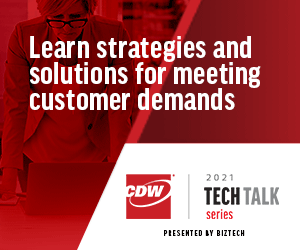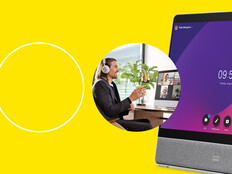Technology Can Enable Better Communication for Hybrid Work
“The conditions of today have forced us to get out of the office, and we’ve lost a bit of that face-to-face communication,” Kennedy said. “But what we’ve been able to do is put in place some processes leveraging technology, thereby enabling our people to keep those communication channels open and make sure that they’re being effective so that we can continue to talk about the risks, continue to talk about the delivery as well as how to drive value consistently.”
However, Kennedy cautioned that technology alone can’t solve the communication problems presented by remote and hybrid work environments. “In the end, if you don’t have the strong process and you don’t have the people mapped to that process well, no technology is going to save you,” he said.
“The agile way of working has always called for the ability to be flexible,” he continued. “Today, we see that consistently, where people are asking technology teams and IT teams to take on new roles and offer new advice in areas they maybe haven’t contributed to before.”
WATCH: Learn more about how IT can assist with communication and collaboration.
With Employees Accustomed to Remote Work, Expectations Change
After nearly two years of working remotely, people are realizing they have different needs they might not have anticipated at the beginning of the pandemic. “People are looking for smarter ways to work. Everyone realizes some of the pitfalls that come along with virtual working, whether that’s consistent back-to-back meetings, extended working hours, constant availability. What they need to be able to see are the benefits to them,” Kennedy said.
He offered some recommendations based on CDW’s recent efforts to improve its own internal communications. “One of the things that we’ve been focused on is helping get a feedback loop with our employees on what’s working and what’s not. What are the needs that they have, and then how do we put in place the training and the change management to make sure they’re receiving the support they need, both today and in the future, for what we may want to roll out?”
“What I found most effective is starting with the outcomes and benefits first and then backing into why the process or technology is needed. It seems pretty straightforward, but I think a lot of times backbone and technology in particular tend to focus more on the tools than on the outcomes,” Kennedy said. He also emphasized recognizing how much time change can take.
Getting buy-in for those changes starts with leadership. “These are things that we try to communicate clearly to our management and that they were receptive to. They saw the benefits,” Kennedy stated. “They saw that it was going to be an investment in time, resources and training, and they were willing to invest in our people. I think that’s going to be the key for people who are successful in making some of these pivots is investing in the people they have today and giving them the opportunity to expand their skills through the technology.”













